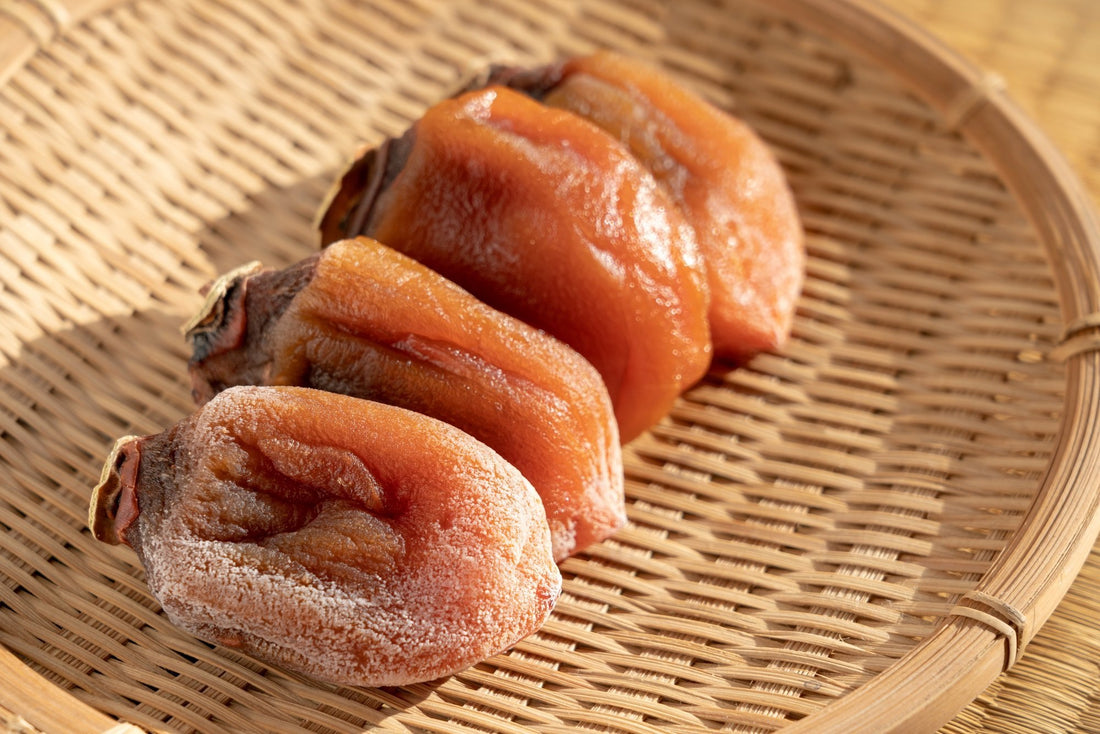
Hoshigaki: The Intricate Japanese Art of Persimmon Drying
Share
Other than being a potent odor eliminator and deodorizer, Japanese persimmon is widely enjoyed as a delicacy in Asia, specifically in Japan, China and Vietnam and it is the epitome of luxury Japanese culture for centuries. Dried persimmon or hoshigaki, may not seem much to look at but you’ll be surprised with the amount of flavor packed in this gelatinous treat with the most luxurious texture you’ll ever try.
The Art of Persimmon Drying
So why is drying Japanese persimmon considered an art form? Because it involves a series of intricate steps starting from choosing the right fruit, prepping them, and massaging them (that’s right, these fruits need massages, too) to storing them properly and serving.
With the delicate handling and amount of work you have to put into it, it’s no wonder hoshigaki is considered an exquisite and luxurious treat in the Japanese culture. They are known as some the most thoughtful gifts you can give a person you care for.
The Steps in Making Japanese Persimmon
Here’s how to make hoshigaki that you, your family, and friends will appreciate.
- First, you’ll need to Hachiya persimmons. Hachiya persimmons are tannic and cone-shaped. Eating the raw newly harvested Hachiya persimmon may prove to be too astringent and firm for most people’s palates, so doing the hoshigaki procedure is the best way to go.
- Even peeling the persimmons is an art. You have to make sure to leave the stem and take the skin off gently in order to avoid ridges, wrinkles and bruises. Make sure not to peel too deeply or the fruit may leak out and dry up prematurely.
- Hanging the peeled Japanese persimmons involves meticulously putting strings from the stems of each fruit and hanging them on a pole, while carefully ensuring the fruits do not touch each other or the strings. Let your persimmons hang for about 7 to 10 days.
- Massaging each one of your hanging persimmons helps prevent wrinkles and removes the air pockets where moisture and mold could accumulate. It also makes the fruit softer by breaking the pulp down and redistributes the natural sugars evenly to the surface. Do this for three to five weeks.
- Once the sugar blooms to the surface, you can take your persimmons down and store them in an airtight bag and store them in the freezer. You can serve them by rolling them gently to remove air pockets before slicing them. They are ready to eat, serve, or give as a gift.
After going through this meticulous procedure, you can now enjoy the succulent, and delicious hoshigaki treat that’s worthy of royalty.

Benefits of Japanese Persimmon
Not only does the whole process give you delicious treats when it’s all done, hanging your Japanese persimmons at home can also help with making the room smell fresh as it is known to have properties that deodorize and substances called tannins that has odor controls. Japanese persimmon has the unique ability to target odor molecules and break them down to keep the space smelling refreshed and deodorized. Be prepared to be greeted by the sweet and fresh smell of Japanese persimmon for weeks as you leave your hoshigaki hanging to dry.
If the delicious taste and aroma of hoshikagi are not enough to make you try the centuries-old art of drying Japanese Persimmon, the numerous anti-oxidants, vitamins, and minerals contained in the fruit might convince you to make it a regular practice. It’s an excellent source of fiber, Vitamin A and C, Vitamin B6. It is low in fat and a good source of good carbohydrates.
Hoshikagi is an excellent hobby for young and seniors alike. It’s an intricate art form that yields a lot of practical benefits and delicious treats that will satisfy any discerning palate.
